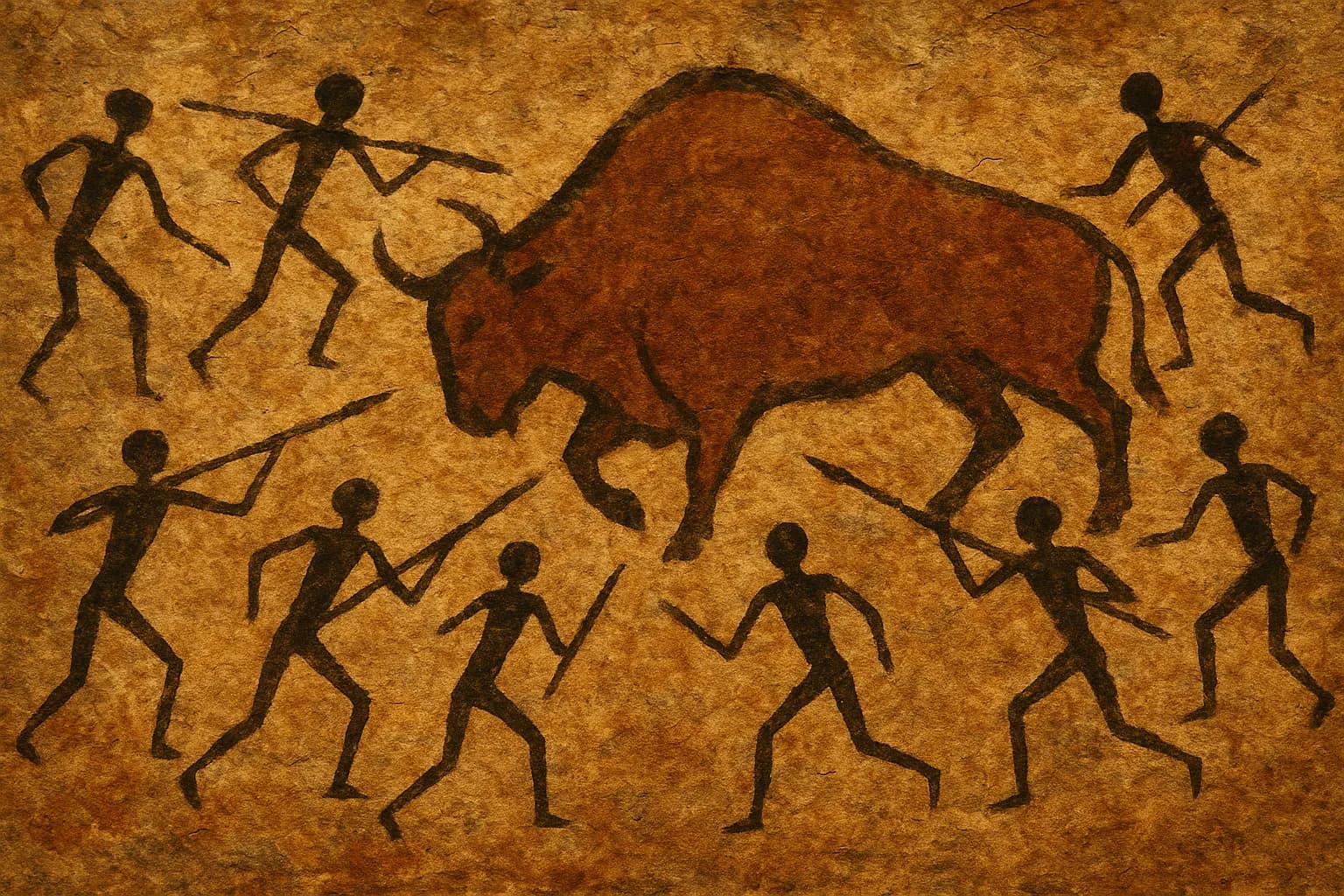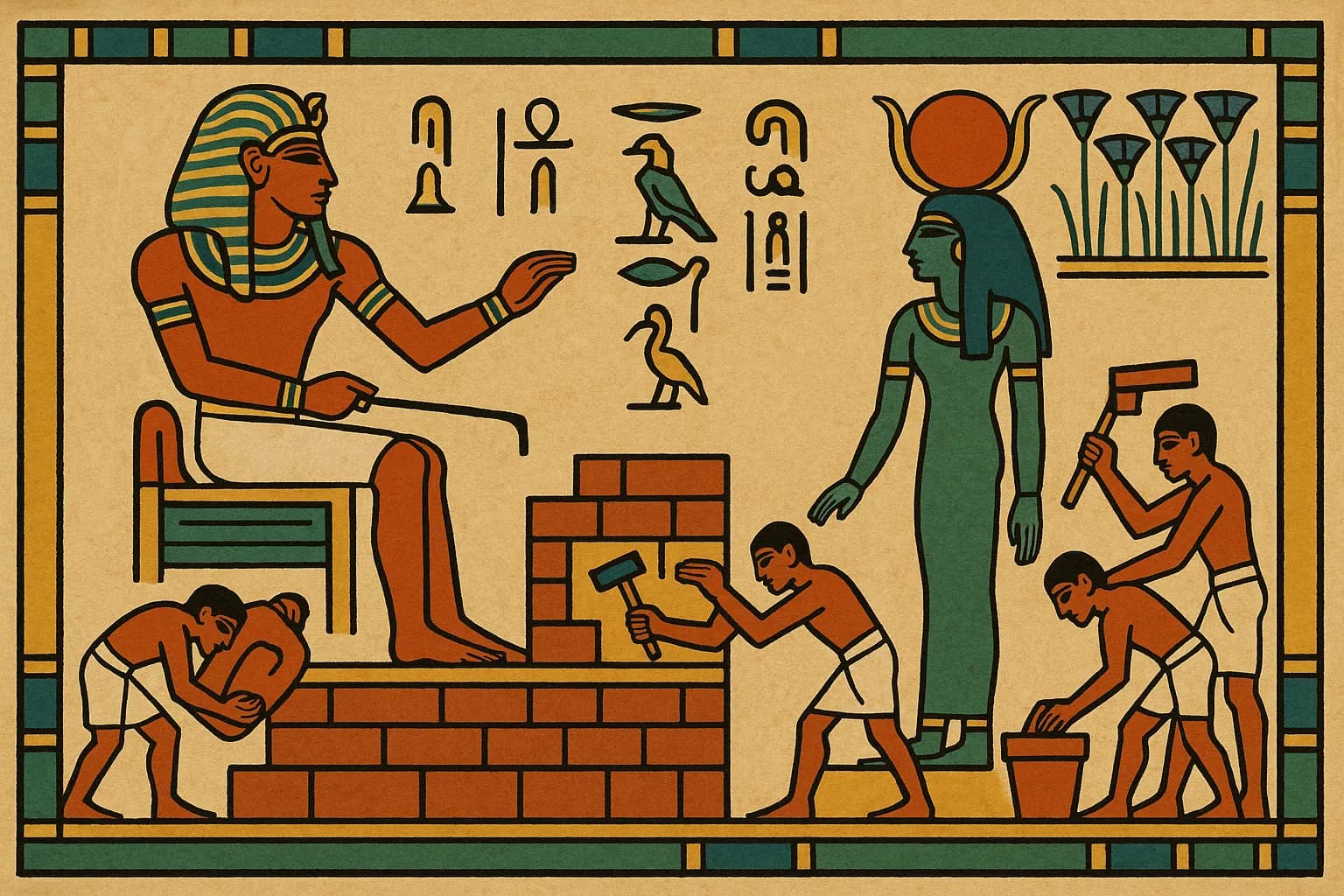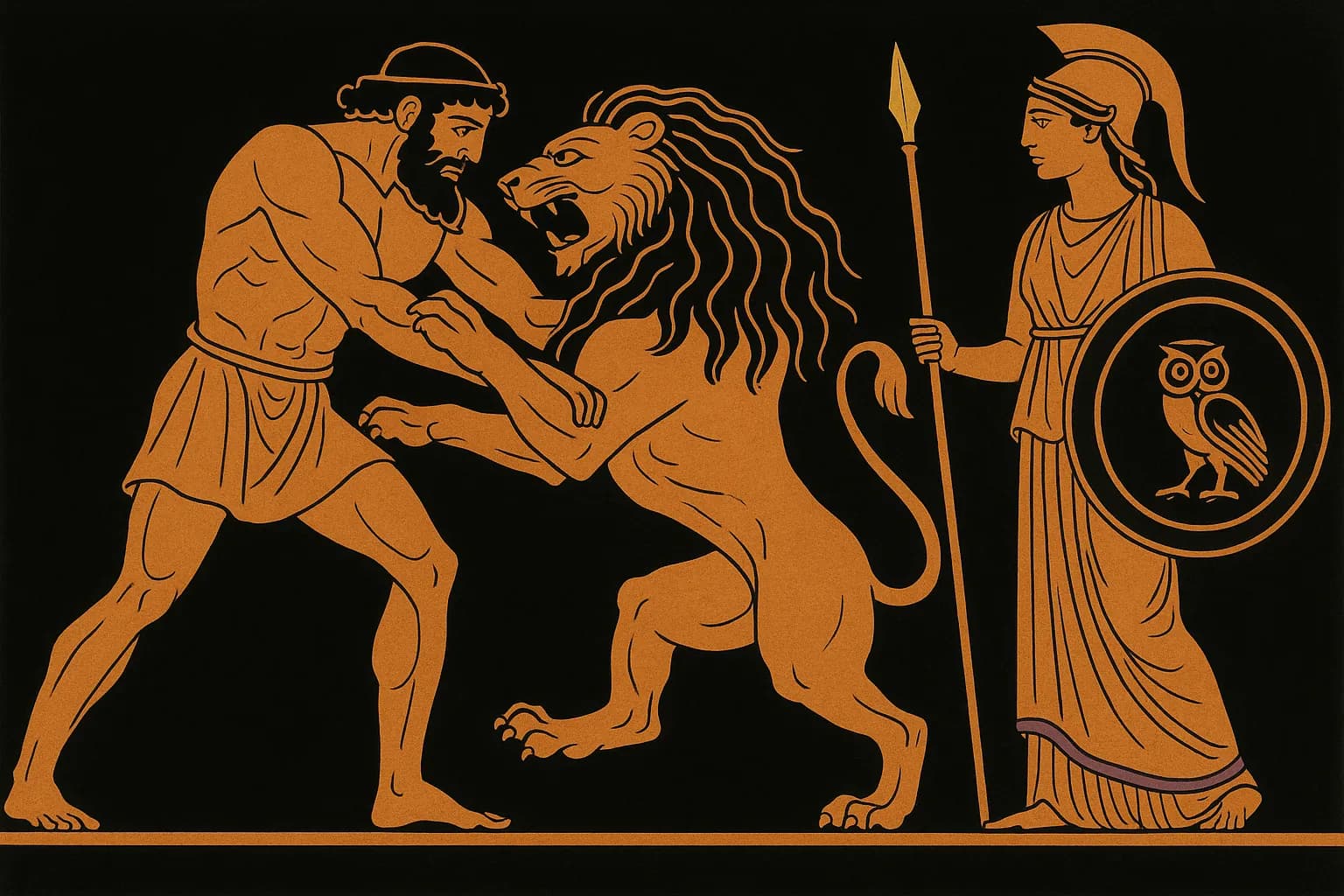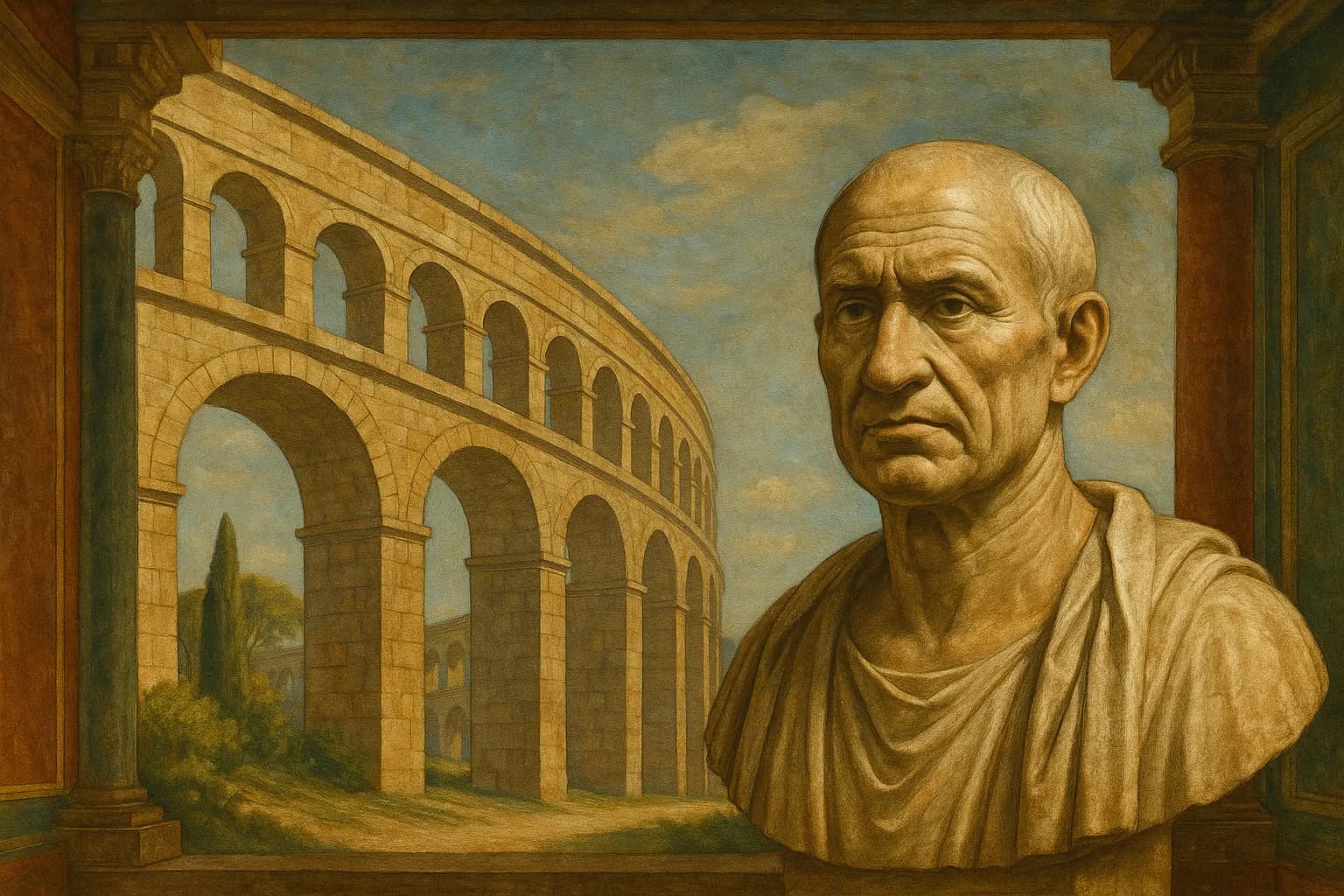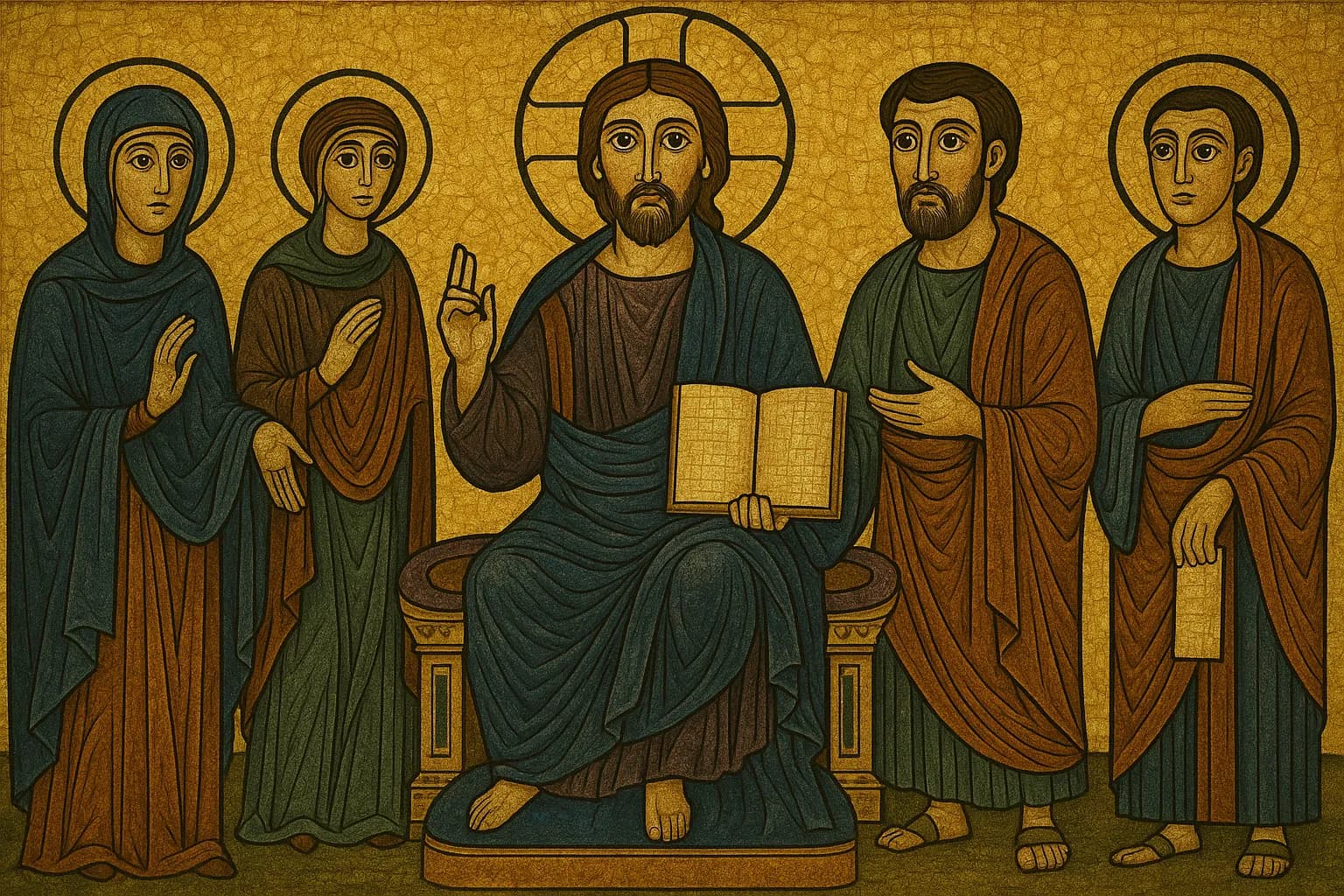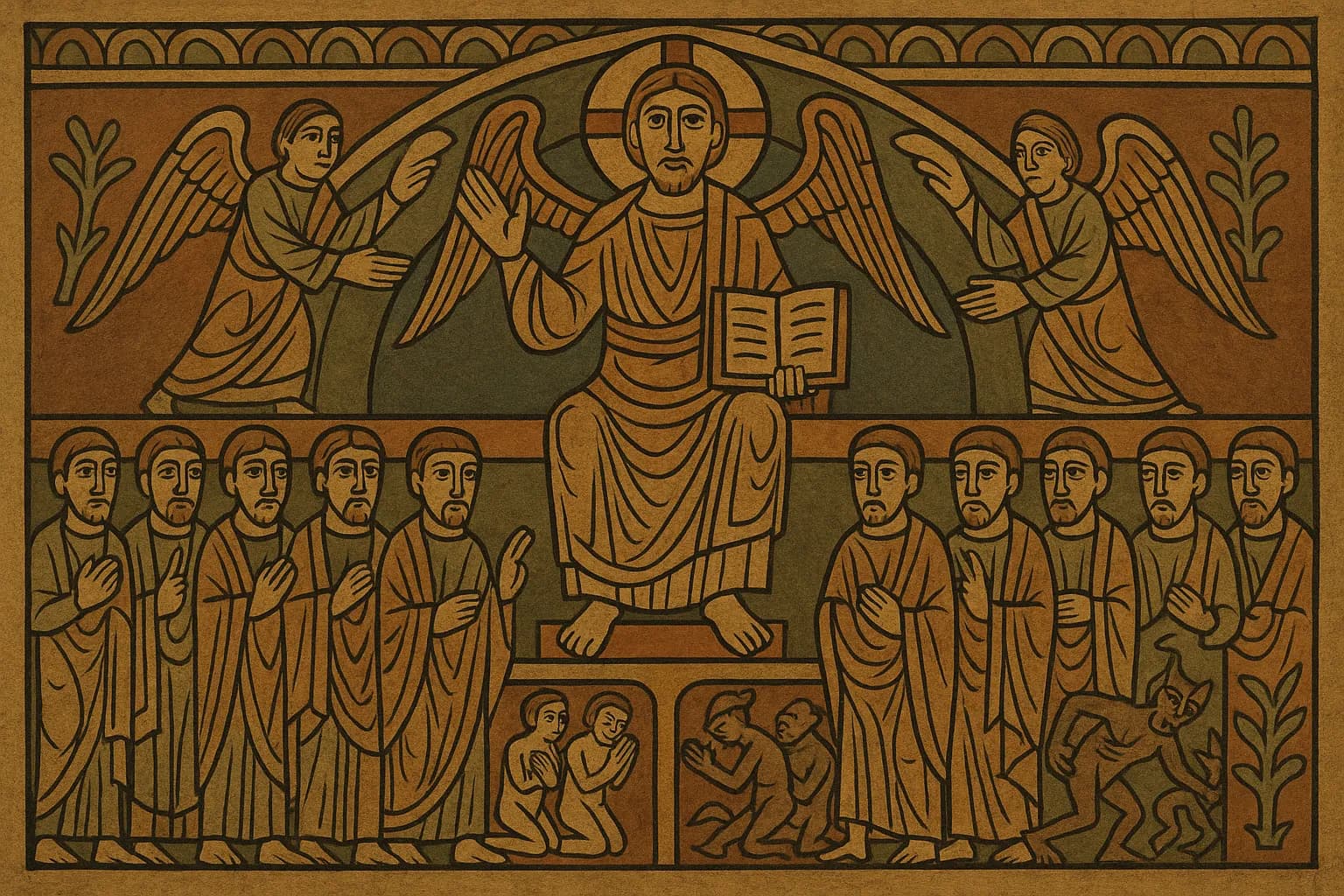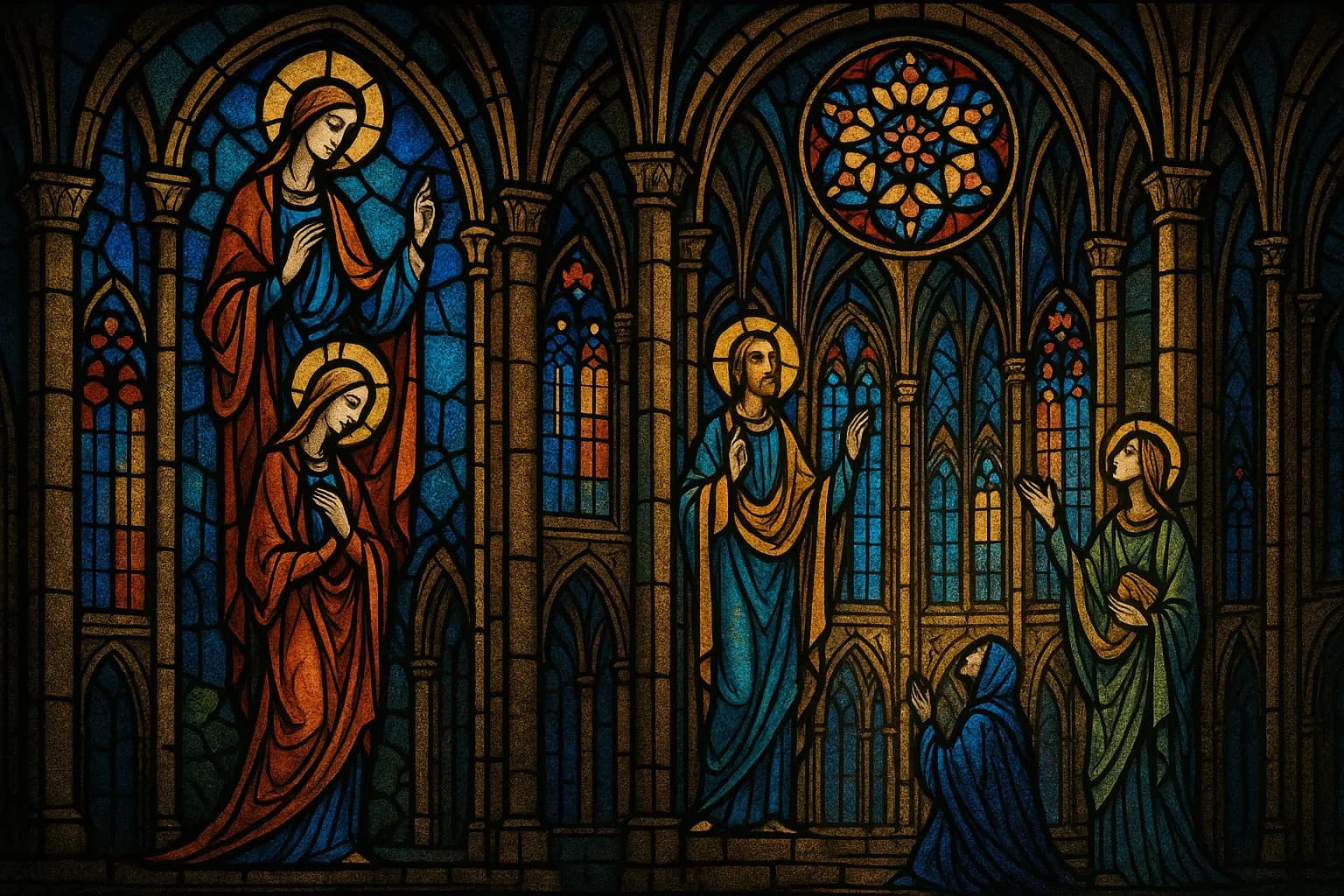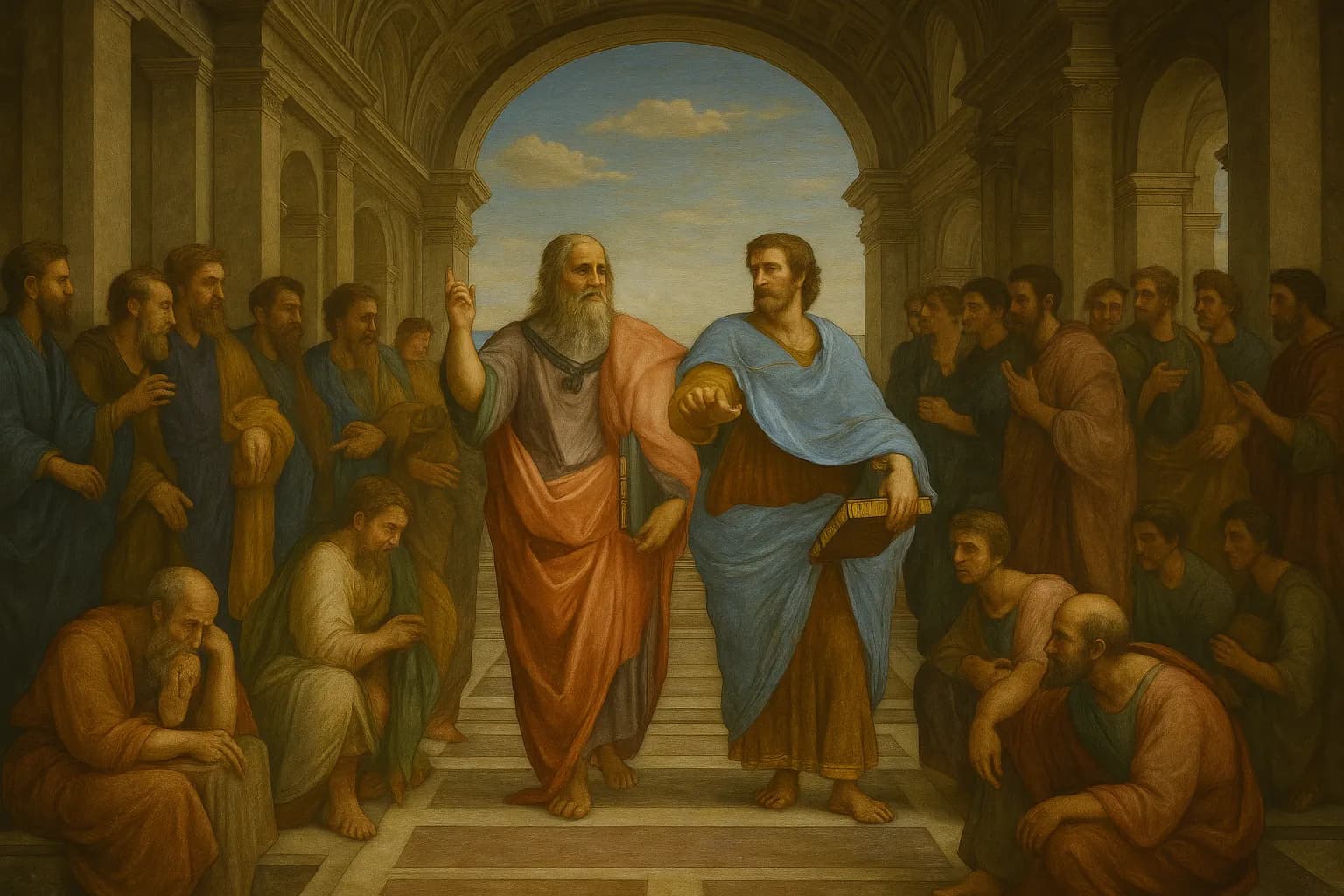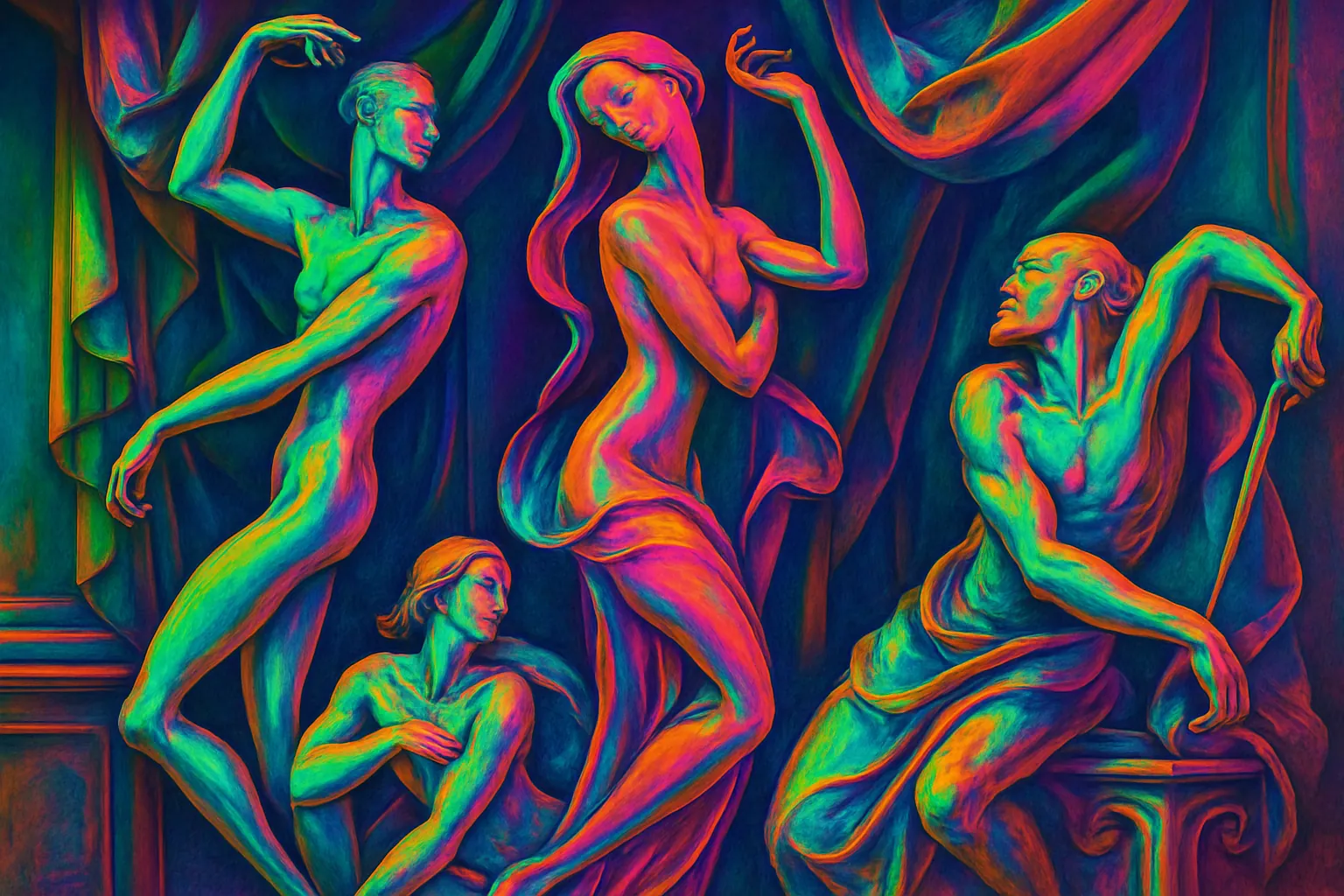Prehistoric Art
Artist & Example Work
Lascaux Cave Paintings (France) (Cave Wall Painting) - Anonymous
Conceptual Issues
Understanding nature, struggle for survival, coping with unknown forces, community bonds.
Key Concepts
Survival, Forces of Nature, Ritual, First Symbols, Clan/Community Identity.
Ancient Egyptian Art
Artist & Example Work
Tomb of Nebamun Frescoes (e.g., Garden Scene) (Wall Painting/Fresco) - Anonymous
Conceptual Issues
Death and the afterlife, maintaining order against chaos, legitimacy of divine authority, sustaining life.
Key Concepts
Quest for Immortality, Divine Order (Ma'at), Sacred Authority, Eternity, Protection/Preservation.
Ancient Greek Art
Artist & Example Work
Achilles and Ajax Playing Dice (Black-figure Vase Painting) - Exekias (Vase Painter)
Conceptual Issues
Man's place in the universe, search for ideal beauty and governance, reason-emotion balance, fate.
Key Concepts
Human Ideal, Reason and Logic, Beauty and Harmony, Measure/Proportion, Democracy/Citizenship, Myth.
Ancient Roman Art
Artist & Example Work
Garden Landscape from the Villa of Livia (Wall Painting/Fresco) - Anonymous
Conceptual Issues
Governing the empire, representing power, maintaining order, practical solutions, historical memory.
Key Concepts
Power, Empire, Law/Order, Pragmatism, Historical Monument/Monumentality.
Early Christian & Byzantine Art
Artist & Example Work
San Vitale Basilica, Ravenna - Empress Theodora Mosaic (Mosaic) - Anonymous
Conceptual Issues
Spiritual quest against the material world, representing the unseen, protecting faith, religious authority.
Key Concepts
Spirituality, Divine Representation, Belief in Salvation, Faith and Dogma, Escape from Material, Holy Empire.
Romanesque Art
Artist & Example Work
Sant Climent de Taüll Apse Fresco (Spain) (Wall Painting/Fresco) - Anonymous
Conceptual Issues
Fear of God, sin and salvation, power of the Church, insecurity of the feudal world.
Key Concepts
Divine Judgment, Sin and Penance, Church Authority, Protection/Refuge, Pilgrimage.
Gothic Art
Artist & Example Work
"Très Riches Heures du Duc de Berry" (Manuscript/Miniature) - Limbourg Brothers
Conceptual Issues
Desire to reach God, uniting faith and reason, rise of cities, personal piety.
Key Concepts
Divine Light, Ascent/Transcendence, Faith and Reason (Scholasticism), Urban Identity/Pride.
Renaissance Art
Artist & Example Work
Mona Lisa (Oil Painting) - Leonardo da Vinci
Conceptual Issues
Centrality of man, discovery of the individual, understanding the world through observation, synthesis of antiquity and Christianity.
Key Concepts
Humanism, Individualism, Scientific Observation, Return to Ancient Ideals, Human Potential, Perspective.
Mannerism
Artist & Example Work
Madonna with the Long Neck (Oil Painting) - Parmigianino
Conceptual Issues
Post-Renaissance crisis and uncertainty, nature of art, internal conflicts, sophisticated tastes.
Key Concepts
Uncertainty/Restlessness, Artificiality/Stylization, Complexity, Internal Conflict, Elegance.
Baroque Art
Artist & Example Work
The Calling of Saint Matthew (Oil Painting) - Caravaggio
Conceptual Issues
Need to influence the masses (religious/political), appealing to the senses, displaying the splendor of power.
Key Concepts
Persuasion/Propaganda, Emotional Intensity, Movement and Drama, Absolute Power, Infinity/Transcendence.
Rococo Art
Artist & Example Work
The Swing (Oil Painting) - Jean-Honoré Fragonard
Conceptual Issues
Aristocracy's final pleasures, sensing impending change, search for intimacy vs. artificiality.
Key Concepts
Pleasure and Entertainment, Lightness/Transience, Sensuality, Social Rituals, Aristocratic Elegance.
Neoclassicism
Artist & Example Work
Oath of the Horatii (Oil Painting) - Jacques-Louis David
Conceptual Issues
Organizing society through reason, search for ideal governance, public good, moral lessons.
Key Concepts
Age of Reason and Logic, Virtue and Citizenship, Order and Simplicity, Historical Examples, Enlightenment.
Romanticism
Artist & Example Work
Wanderer above the Sea of Fog (Oil Painting) - Caspar David Friedrich
Conceptual Issues
Reaction against rationalism and industrialization, individual's alienation, broken bond with nature, freedom of expression.
Key Concepts
Emotion and Passion, Individual's Inner World, Nature (Sublime and Wild), Imagination/Escape, National Identity.
Realism
Artist & Example Work
The Stone Breakers (Oil Painting) - Gustave Courbet
Conceptual Issues
Social injustices, condition of the working class, showing reality as it is, role of art.
Key Concepts
Social Reality/Naked Truth, Claim of Objectivity, Class Differences, Everyday Life.
Impressionism
Artist & Example Work
Impression, Sunrise (Oil Painting) - Claude Monet
Conceptual Issues
Capturing the speed and momentary perception of modern life, debate on objective reality vs. personal perception.
Key Concepts
Momentary Perception/Impression, Light and Atmosphere, Rhythm of Modern Life, Subjectivity, Nature of Seeing.
Post-Impressionism
Artist & Example Work
Starry Night (Oil Painting) - Vincent van Gogh
Conceptual Issues
Search for lasting form and deeper meaning beyond Impressionism, need to express the inner world.
Key Concepts
Search for Structure and Form, Emotional Expression, Symbolism, Inner Reality, Personal Style.
Fauvism
Artist & Example Work
The Joy of Life (Le bonheur de vivre) (Oil Painting) - Henri Matisse
Conceptual Issues
Color freeing itself from representation to become an autonomous means of expression, rebellion against academic rules.
Key Concepts
Autonomy/Arbitrariness of Color, Instinctual Energy, Joy of Life, Decorative Surface.
Expressionism
Artist & Example Work
The Scream (Oil/Pastel/Tempera) - Edvard Munch
Conceptual Issues
Spiritual turmoil created by the modern world, individual's loneliness and fears, striking inner truth.
Key Concepts
Inner Anguish/Anxiety, Alienation, Psychological Depth, Social Criticism, Deformation.
Cubism
Artist & Example Work
Les Demoiselles d'Avignon (Oil Painting) - Pablo Picasso
Conceptual Issues
Inadequacy of traditional representation, changing perception of time-space, fragmented nature of perception.
Key Concepts
Multiple Viewpoints, Fragmented Form, Time-Space Perception, Abstraction, Analysis of the Object.
Futurism
Artist & Example Work
The City Rises (Oil Painting) - Umberto Boccioni
Conceptual Issues
Intoxication of technological progress, rejection of old values, worship of speed and machines.
Key Concepts
Speed and Dynamism, Machine Aesthetics, Worship of Modernity, Destruction of the Past, Violence.
Dadaism
Artist & Example Work
Nude Descending a Staircase, No. 2 (Oil Painting) - Marcel Duchamp
Conceptual Issues
Loss of meaning created by war, bankruptcy of bourgeois values, desire to break the boundaries of art.
Key Concepts
Meaninglessness/Absurdity, Rebellion and Provocation, Randomness, Anti-Art, Rejection of Logic.
Surrealism
Artist & Example Work
The Persistence of Memory (Melting Clocks) (Oil Painting) - Salvador Dalí
Conceptual Issues
Escaping the oppression of reason, exploring suppressed desires and the subconscious, limits of reality.
Key Concepts
Unconscious and Dreams, The Irrational/Illogical, Automatism, Desire and Instincts, Revolutionary Spirit.
Abstract Expressionism
Artist & Example Work
No. 5, 1948 (Drip Technique/Oil Painting) - Jackson Pollock
Conceptual Issues
Post-war trauma and search for meaning, individual's existential struggle, expression of the subconscious.
Key Concepts
Existential Anxiety, Abstract Expression, Action and Gesture, Individual Mythology, Spontaneity.
Pop Art
Artist & Example Work
Campbell's Soup Cans (Screenprint/Polymer Paint) - Andy Warhol
Conceptual Issues
Dominance of consumer culture, blurring of high/low art distinction, power of media.
Key Concepts
Mass Culture/Popular Images, Consumer Society, Irony and Superficiality, Mass Production/Repetition.
Minimalism
Artist & Example Work
Die Fahne Hoch! (Shaped Canvas/Enamel Paint) - Frank Stella
Conceptual Issues
Rejection of subjective expression in art, focus on the object's physical presence, viewer experience.
Key Concepts
Objectivity/Objecthood, Simplicity and Reduction, Industrial Materials, Perceptual Experience.
Conceptual Art
Artist & Example Work
One and Three Chairs (Installation/Idea - not painting) - Joseph Kosuth
Conceptual Issues
Question of what constitutes an artwork, primacy of the idea over the object, role of art institutions.
Key Concepts
Primacy of Idea/Concept, Definition/Limits of Art, Language and Text, Dematerialization.
Postmodernism
Artist & Example Work
Betty (Oil Painting) - Gerhard Richter
Conceptual Issues
Distrust of universal truths, reinterpretation of history and cultures, fluidity of identity.
Key Concepts
Rejection of Grand Narratives, Fragmentation/Eclecticism, Irony/Pastiche/Parody, Identity Politics.
Contemporary Art
Artist & Example Work
Machine Hallucinations (AI Data Sculpture/Digital Art - not painting) - Refik Anadol
Conceptual Issues
Impact of technology on human life, virtual-real relationship, global issues, data overload.
Key Concepts
Globalization, Digitalization/Cyber Culture, Network Society, Ecological Awareness, Identity and Technology.
